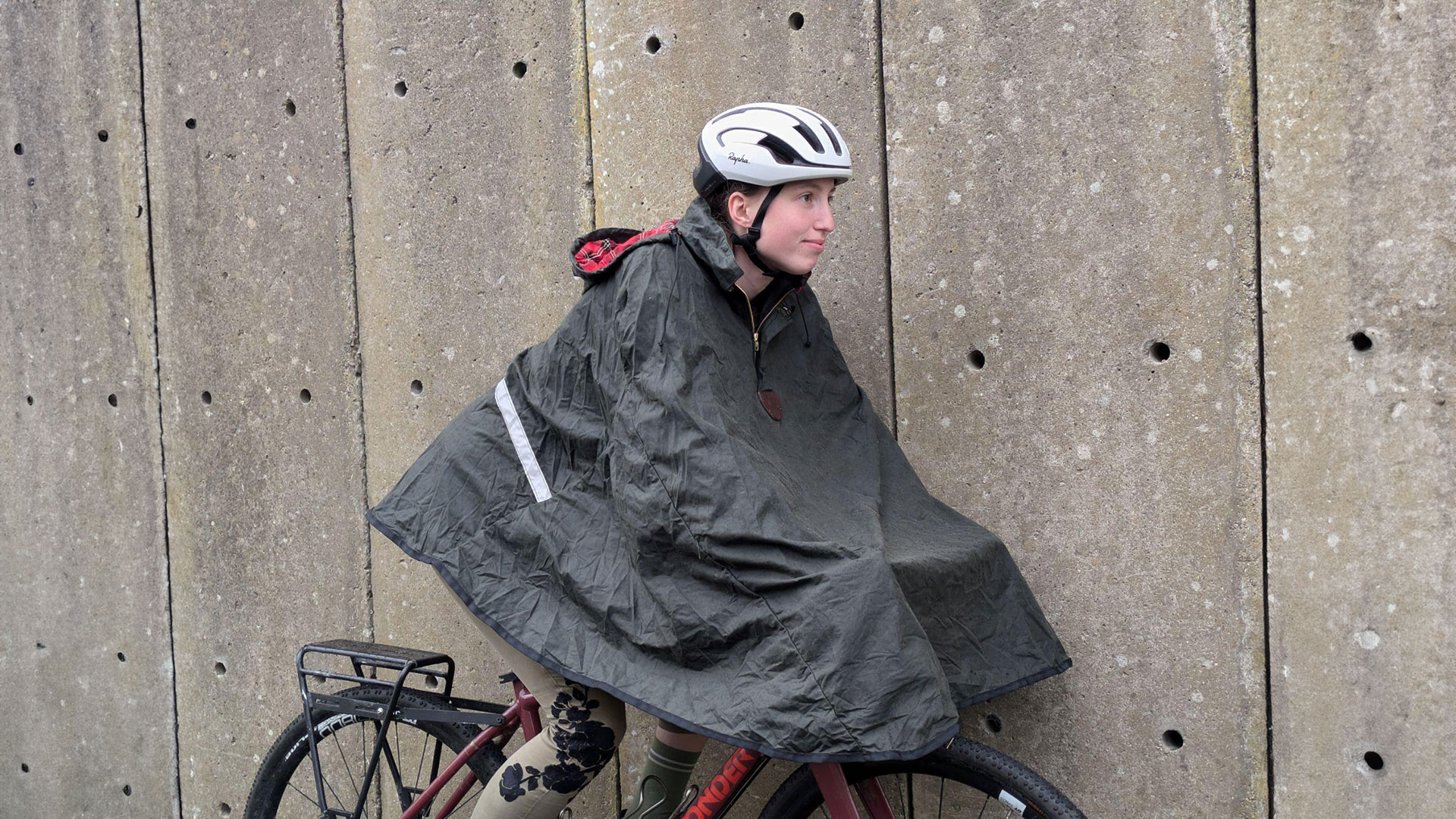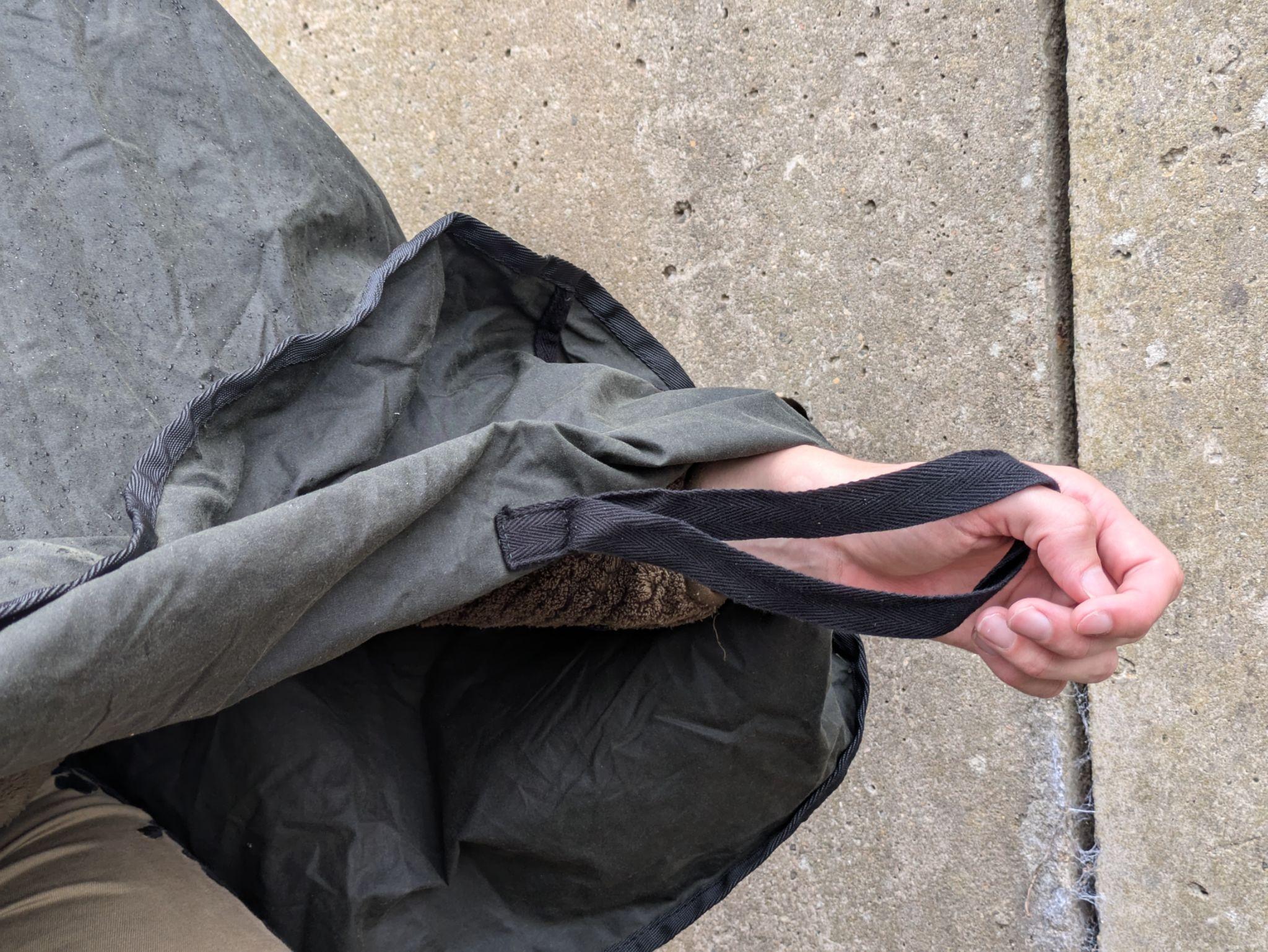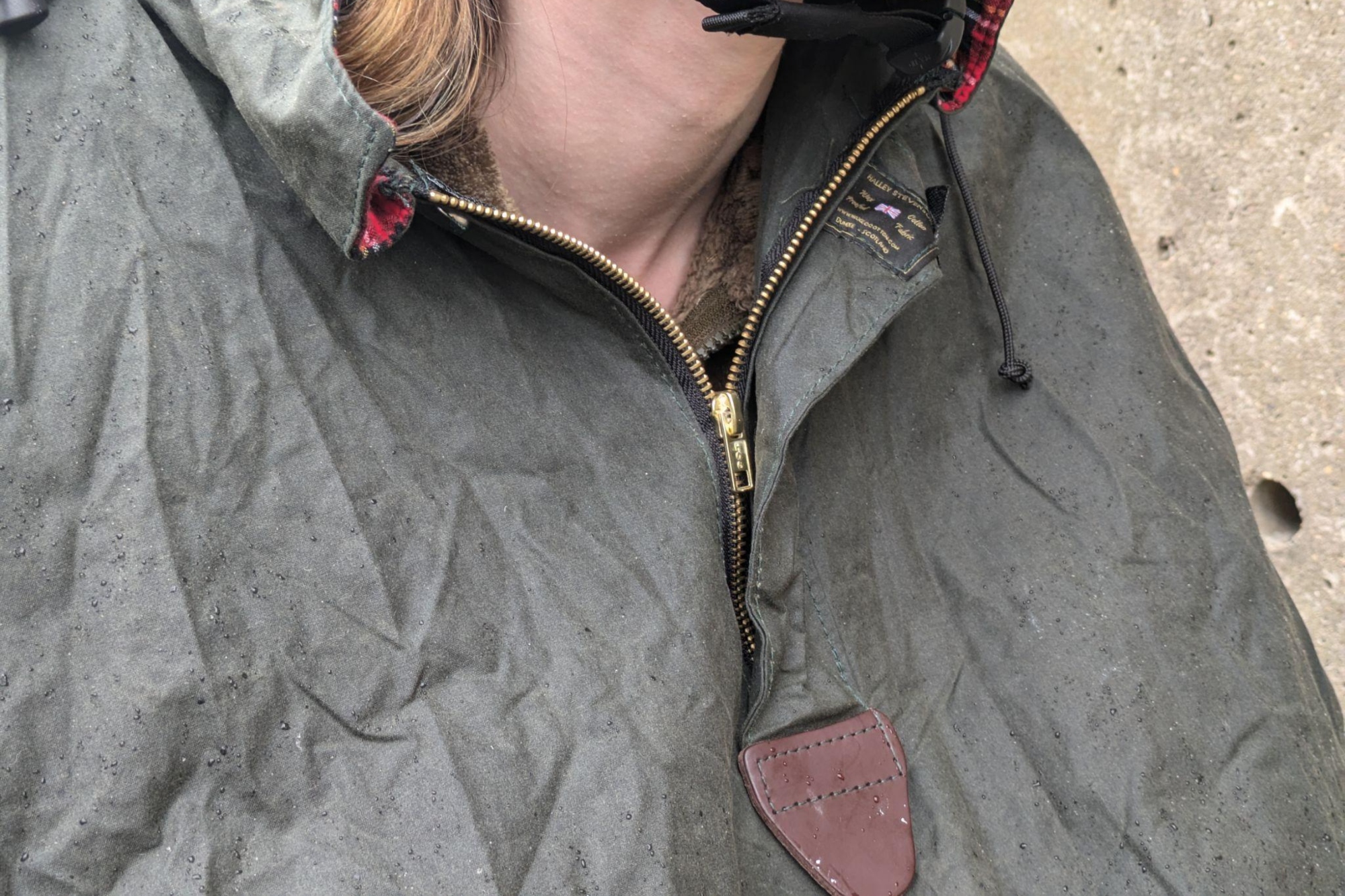Carradice Duxback Rain Poncho review - is a traditional rain cape the ideal jacket for commuters?
This waxed cotton one-piece layer covers your hands and thighs while riding

There are so many great aspects to Carradice’s Duxback rain cape. Unlike essentially all cycling jackets, the time-proven, hard-wearing wax cotton material is (of course) made from natural fibres - and having a single layer which covers your hands and thighs as well as your torso is super convenient. However, the rain cape does obscure your bars (not great for cycle computers or lights), you can’t wear it with a rucksack (no sleeves) and it’s easy to overheat if you’re not on an e-bike (no full length zip). These won’t be dealbreakers for everyone - if that’s the case for you, I can fully recommend the Duxback Rain Poncho. But it does mean that the pool of people who it could work for is fairly limited.
-
+
Pros:
-
+
One-piece weather defense for torso and legs
-
+
High quality materials
-
+
Long-lasting reproofable fabric
-
+
Waterproof
-
-
Obscures the handlebars (incl. Bike computer, lights)
-
-
Can’t wear with a rucksack
-
-
Easy to overheat
You can trust Cycling Weekly.

Sometimes, after years - or decades - of innovation, it turns out the old ways are the best. Carradice, the 92-year-old cycling accessory purveyor from Lancashire, England knows a thing or two about that. The surge in popularity of bikepacking saddlepacks must have come with some bemusement, given that Carradice has been steadfastly producing them since the 1930s.
Could the same resurgence happen for the faithful rain cape? - (or rain poncho, as its moniker has now become). Let’s see how it stacks up…
Construction
The design is remarkably simple. Throwing on just a single piece of fabric, Carradice’s Duxback Rain Poncho provides protection for your torso, hands and upper thighs. To get similar protection from the rain with de rigueur kit from today, you’d be fumbling with four items of clothing (waterproof jacket and trousers, plus two gloves).
The fabric itself is waxed cotton, a timeless hardwearing staple of outdoor pursuits. Modern synthetic fabrics can boast a higher hydrostatic head (a measure of how waterproof the fabric is) and higher breathability ratings, but I think there’s a lot to be said for the use of natural fibres - plus after 20 years, I know which I’d put my money on lasting best.
The Duxback Rain Poncho does have a hood, but in practice I found that I couldn’t get it to work well with my helmet (to be fair, I’ve yet to come across a hood which does). Inside the poncho, there are some fabric loops, which help to keep the poncho in place when you’re on the bike - so that it doesn’t flap around as you’re riding along.
The ride
The first thing you notice when pulling on the rain poncho for the first time is the build quality. It feels a reassuringly robust and a heavy duty piece of kit. The cape does an excellent job at keeping your hands and thighs dry. It doesn’t protect your calves though, and even with mudguards you do end up getting a little mucky on the rainiest days. If you would prefer to stay as clean as possible, you would probably be better off with a jacket and waterproof trouser combo.
On the other hand, I really appreciated just being able to throw on this single layer - it made leaving the house and errands around town much more efficient. It fits over everything, so you can dress just as you’d like, only wearing the rain cape for the ride.
The latest race content, interviews, features, reviews and expert buying guides, direct to your inbox!

The reflective strip on the back does make the DuxBack a little more visible
Stopping and starting at traffic lights or junctions is part and parcel of city riding, and unfortunately I found that the poncho wasn’t the easiest to use in these circumstances. I found the thumb loops a little difficult to use, especially with raising my arms for signaling.
Here is a bit of a sticking point - although there is a reflective strip on the back of the rain cape, the majority of the cape has that muted wax cotton look. Very attractive, but also not very stand-out on grey rainy days. With the flowing nature of the garment, I don’t think my signals were as obvious or visible as when wearing a brightly coloured jacket. If more of my riding was on segregated cycle paths, though, that wouldn’t be so much of a consideration.

Fabric loops help keep the cape from levitating from you and your bike
Another issue I found is that the quarter length zip doesn’t let you dump a load of heat quickly in the case that you’ve overlayered. Fully unzipping a jacket, on the other hand, is a quick and highly effective action you can take whilst still riding.
That said, if you’re riding an ebike, which lets you keep your effort that much more measured, this is less of a problem. But for me on my analogue bike, I do have large fluctuations in the efforts I put out - particularly on the hills. So the limited degree to which I could regulate my temperature was more of an issue.

Quality zips and fastenings demonstrate that this is a garment built to last
It’s also not possible to use a cycling backpack with Carradice’s rain poncho; there’s no sleeves to thread your arms through the backpack straps. Therefore the rain poncho works better for those who like to ride with bike panniers instead.
It’s also worth pointing out that you can’t see your cycling computer or front bike lights attached to the tops of your handlebars as the rain cape. I didn’t find it much of a problem that I couldn’t see my bike computer as I know my cycle commute to work off by heart, but it was frustrating having to attach my front bike light to the drops of my bars (as the light would be obscured on the tops of my bars). Some commuting bikes won’t have drop bars and so this would present a bigger problem.
Value and conclusion
Priced at £97, the Carradice Duxback Rain Poncho is a similar price to performance commuter cycling jackets that we’ve rated such as the Rapha Commuter Lightweight Jacket, and much cheaper than other options including Castelli’s Commuter Reflex Jacket (£200). The Rapha and Castelli options are much more versatile though; if you ride at the weekends occasionally as well as your commutes then you could use the Rapha and Castelli on those sorts of higher paced rides too.

I’ve been hooked on bikes ever since the age of 12 and my first lap of the Hillingdon Cycle Circuit in the bright yellow kit of the Hillingdon Slipstreamers. For a time, my cycling life centred around racing road and track.
But that’s since broadened to include multiday two-wheeled, one-sleeping-bag adventures over whatever terrain I happen to meet - with a two-week bikepacking trip from Budapest into the mountains of Slovakia being just the latest.
I still enjoy lining up on a start line, though, racing the British Gravel Championships and finding myself on the podium at the enduro-style gravel event, Gritfest in 2022.
Height: 177cm
Weight: 60–63kg